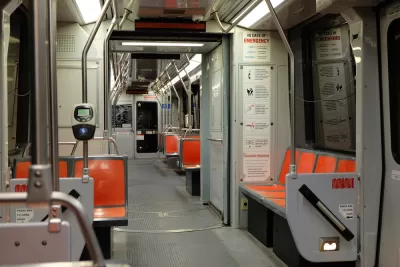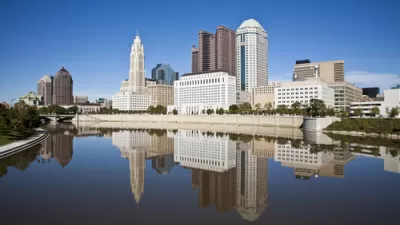The largest state in the country has been ordered to shelter in place.

Gov. Gavin Newsom announced on Thursday evening that he had directed the state Public Health Officer to issue a "stay at home" order to protect residents. The order takes effect immediately and will remain in place "until further notice."
The March 19 executive order [pdf] followed press reports that Gov. Newsom expected that 56 percent of California’s population, over 22 million people, would be infected with COVID-19 over an eight-week period without mitigation efforts.
This Order is being issued to protect the public health of Californians. The California Department of Public Health looks to establish consistency across the state to ensure that we mitigate the impact of COVID-19. Our goal is simple, we want to bend the curve, and to disrupt the spread of the virus.
The actual order [pdf] "to stay home or at their place of residence" was issued by Dr. Sonia Y. Angell, California Department of Public Health Director and State Health Officer.
It follows action that Newsom took last Sunday that requested the closure of bars, reduced occupancy of restaurants, and the self-isolation of seniors aged 65 and older.
However, six Bay Area county public health officers felt that action, which was not in the form of an edict, didn't go far enough, so they issued formal "shelter-in-place" orders affecting 6.7 million residents. By Wednesday, the three remaining Bay Area followed suit, along with neighboring counties to the north and south. And on Thursday, the Los Angeles County Public Health Officer issued a "Safer At Home Order for the Control of COVID-19 [pdf]" affecting over 10 million residents.
All three names—stay at home, shelter in place, and safer at home, are essentially the same. While legal, enforceable orders, they are not "lockdowns," which would require residents to documents upon leaving their homes, as enforced in Italy as well as Wuhan and other cities in Hubei province, China, despite the latter reporting no new additional COVID-19 cases on Thursday. As for Italy, the death toll from the deadly disease now exceeds that of China.
There is one significant way in which Angell's order differs from the county orders—how it deals with the exceptions. It refers to the U.S. Department of Homeland Security, specifically the Cybersecurity and Infrastructure Security Agency (CISA), that identifies "Essential Critical Infrastructure Workers" during the COVID-19 response.
This guidance and accompanying list [pdf] are intended to support State, Local, and industry partners in identifying the critical infrastructure sectors and the essential workers needed to maintain the services and functions Americans depend on daily and need to be able to operate resiliently during the COVID-19 pandemic response.
As for "essential services" that will remain open, the California Coronavirus (COVID-19) Response webpage (source article) lists:
- Gas stations
- Pharmacies
- Food: Grocery stores, farmers markets, food banks, convenience stores, and take-out and delivery restaurants
- Banks
- Laundromats/laundry services
The state COVID-19 updates indicates that as of March 18, 2020, there were a total of 675 positive cases, third highest after New York and Washington, respectively, and 16 deaths, second highest after Washington, according to the POLITICO live tracker.
Additional reading in media:
- Los Angeles Times: Gov. Gavin Newsom orders all Californians to stay at home
- Mercury News: Gov. Newsom expands Bay Area shelter-in-place to all of California
Related in Planetizen:
- The New Regionalism of the Coronavirus Pandemic, March 19, 2020
- Bay Area Ordered to Shelter in Place, March 17, 2020
-
A Nation of 60 Million on Lockdown, March 11, 2020
FULL STORY: Stay home except for essential needs

Alabama: Trump Terminates Settlements for Black Communities Harmed By Raw Sewage
Trump deemed the landmark civil rights agreement “illegal DEI and environmental justice policy.”

Planetizen Federal Action Tracker
A weekly monitor of how Trump’s orders and actions are impacting planners and planning in America.

The 120 Year Old Tiny Home Villages That Sheltered San Francisco’s Earthquake Refugees
More than a century ago, San Francisco mobilized to house thousands of residents displaced by the 1906 earthquake. Could their strategy offer a model for the present?

In Both Crashes and Crime, Public Transportation is Far Safer than Driving
Contrary to popular assumptions, public transportation has far lower crash and crime rates than automobile travel. For safer communities, improve and encourage transit travel.

Report: Zoning Reforms Should Complement Nashville’s Ambitious Transit Plan
Without reform, restrictive zoning codes will limit the impact of the city’s planned transit expansion and could exclude some of the residents who depend on transit the most.

Judge Orders Release of Frozen IRA, IIJA Funding
The decision is a victory for environmental groups who charged that freezing funds for critical infrastructure and disaster response programs caused “real and irreparable harm” to communities.
Urban Design for Planners 1: Software Tools
This six-course series explores essential urban design concepts using open source software and equips planners with the tools they need to participate fully in the urban design process.
Planning for Universal Design
Learn the tools for implementing Universal Design in planning regulations.
Clanton & Associates, Inc.
Jessamine County Fiscal Court
Institute for Housing and Urban Development Studies (IHS)
City of Grandview
Harvard GSD Executive Education
Toledo-Lucas County Plan Commissions
Salt Lake City
NYU Wagner Graduate School of Public Service





























